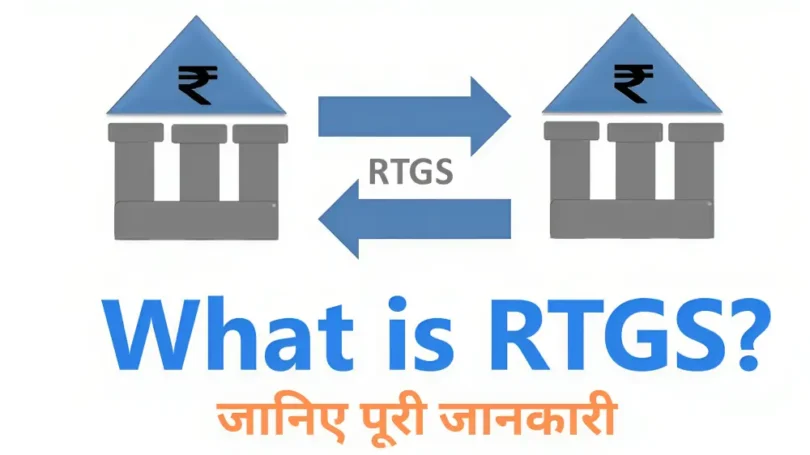For financial transactions, the RTGS (Real Time Gross Settlement), is crucial. This crucial system enables large-value, rapid, safe, and secure fund transfers between banks or other financial institutions. RTGS has completely changed the way financial transactions are conducted thanks to its dependable method of enabling instantaneous settlements. This article examines the topic of “What is RTGS?” and explains the features and advantages of RTGS.
What is RTGS?
What is RTGS? A specialized electronic funds transfer system for high-value and urgent transactions between financial institutions is called Real-Time Gross Settlement, or RTGS. Transactions are handled instantly and separately in a Real-Time Gross Settlement system; they are not combined with other payments. This reduces credit and liquidity risks by ensuring quick and secure money transfers. Significant transfers like interbank settlements, sizable corporate transactions, payments to the government, and international remittances are frequently made via Real-Time Gross Settlement systems. Owing to its instantaneous nature and guaranteed finality, Real-Time Gross Settlement is essential for enhancing the financial system’s efficiency and stability, facilitating more seamless money transfers in a world economy that is changing quickly.
Features and Benefits of RTGS
- No Maximum Limit: Within the context of the real-time gross settlement framework, small and large amounts of money can be transferred through bank branch transactions since they usually have no maximum limit.
- Real-time transfer: Real-time fund transfers are made possible by Real-Time Gross Settlement, a crucial part of banking’s real-time gross settlement system. This increases the efficiency of the transaction by guaranteeing that the recipient’s account is credited right away.
- Reduced risk: The lack of physical instruments in Real-Time Gross Settlement strengthens its security by drastically lowering the possibility that these instruments will be misplaced, stolen, or fraudulently cashed by uninvited parties.
- Seven days a week: As part of its real-time gross settlement functionality, Real-Time Gross Settlement runs every day of the week, including weekends and holidays. This means that users can transfer money whenever they need to, which increases accessibility and convenience.
- No physical instruments: Because real-time gross settlement is completely electronic, it does away with the need for tangible instruments like demand drafts or checks. This lessens the risk related to physical documentation while also streamlining the process.
- Safety and Security: Real-Time Gross Settlement, as it is known in banking, is an extremely safe way to transfer money. Comparing electronic transactions to physical instruments like demand drafts or checks, the former greatly lowers the risk of theft, loss, or fraudulent activity.
Ways to Make RTGS Transaction
- Online Process: Enter the beneficiary’s name, account number, and IFSC; enter the desired amount; access your bank’s online or mobile app net banking portal; confirm that Real-Time Gross Settlement is enabled; and begin the transfer by entering the one-time passcode that you received on your registered email address or mobile device.
- Offline Process: At the nearest bank branch, enter the details requested on the Real-Time Gross Settlement form (beneficiary name, account number, IFSC, transfer amount, etc.). Next, make the required cash or check payment.
How Does RTGS Work?
- Initiation Process: The first step is the initiation process, in which the payer (sender) first starts an RTGS transaction by giving the required information, such as the name, bank account number, and transfer amount of the recipient (payee). Subsequently, the bank of the payer confirms that there are funds in their account.
- Verification of Settlement Message: Following the initiation procedure, the settlement message is received by the Real-Time Gross Settlement system, which then confirms the accuracy and legitimacy of the data. It carries out necessary verifications, including verifying the availability of funds, verifying regulatory compliance, and validating the sender’s account.
- Funds Transfer: The Real-Time Gross Settlement system permits the transaction amount to be debited from the sender’s account and credited to the recipient’s account in tandem after the settlement message has been validated. This money transfer takes place immediately.
- Confirmation: The Real-Time Gross Settlement system creates confirmations for the sender and the recipient once the money is transferred. Typically, these confirmations contain transaction specifics like the sender and recipient’s updated account balances, a timestamp, and the transaction reference number.
How to Do RTGS Transfer?
- Using your login credentials, log into your net banking account.
- From the Fund Transfer tab, choose Real-Time Gross Settlement.
- Enter the beneficiary’s name and account details under Real-Time Gross Settlement, including the account number, bank name, and IFSC code.
- To start the transfer, click “Confirm.”
- To initiate the transfer, enter the OTP that you received on your registered email address or mobile number. To check the status, look through the email or SMS confirmation.
RTGS Limits
A ₹2 lakh RTGS transaction is the minimum amount. There is no maximum RTGS limit in India if the Real-Time Gross Settlement transaction is completed through a bank branch, but some banks may have a daily limit of ₹25 lakhs or ₹50 lakhs for online transactions.
Conclusion
What is RTGS? A key component of the contemporary banking infrastructure is Real-Time Gross Settlement (RTGS), which permits safe and rapid money transfers between financial institutions. Global financial transactions have changed as a result of its real-time processing, risk mitigation, and support for high-value transactions.








Leave a Comment